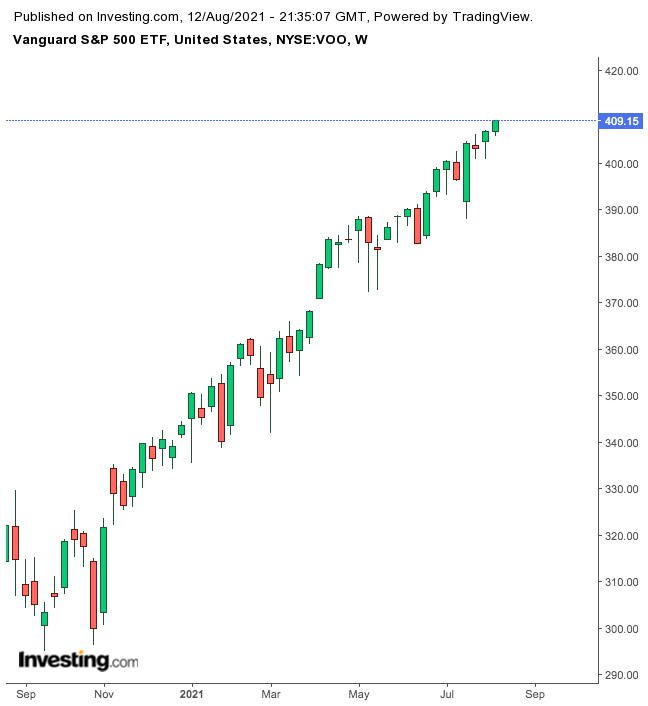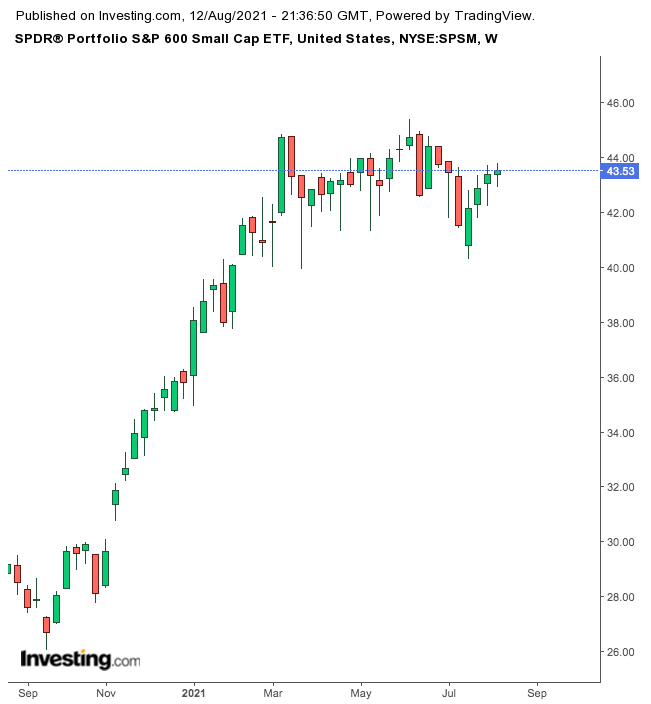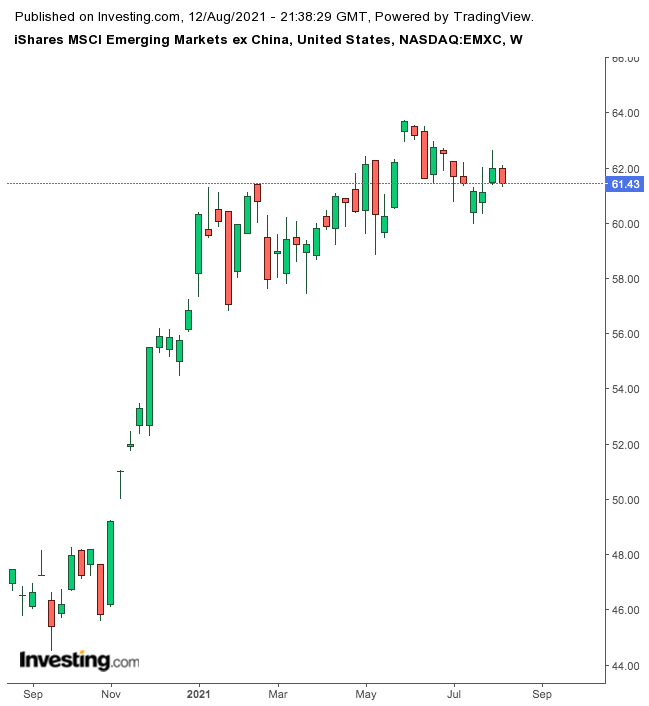In 2020, there were more than 7,600 exchange-traded funds (ETFs) worldwide. For the week that ended Aug. 4, U.S. domestic equity funds saw “inflows of $7.90 billion for the week.” In other words, since the listing of the first ETF, the SPDR® S&P 500 (NYSE:SPY) in 1993, the ETF market in the United States has grown significantly.
Today, we introduce three low-cost ETFs with low annual expense ratios. They could appeal to a range of readers, including new investors who might be building their long-term portfolios.
1. Vanguard S&P 500 ETF
Current Price: $409.15
52-Week Range: $295.04 - $408.07
Dividend Yield: 1.30%
Expense Ratio: 0.03% per year
The Vanguard S&P 500 ETF (NYSE:VOO) gives access to shares of companies in the S&P 500 index, which it tracks. The fund started trading in September 2010.

In terms of the sub-sectoral breakdown, information technology companies have the largest slice, with 27.40%. Next in line are health care (13%), consumer discretionary stocks (12.30%) and financials (11.3%).
The 10 largest names comprise 28.5% of the total net assets of $753.5 billion. Among them are Apple (NASDAQ:AAPL), Microsoft (NASDAQ:MSFT), Amazon (NASDAQ:AMZN), Alphabet (NASDAQ:GOOGL) (NASDAQ:GOOG) and Facebook (NASDAQ:FB). All of this together means VOO is tilted toward growth.
Over the past year, the fund is up about 33%, and hit a record high in recent days. As a result, valuations have become stretched. Trailing P/E and P/B ratios stand at 26.9x and 4.4x, respectively.
Understandably, it is hard to know how much longer the uptrend in broader markets could last. We believe short-term profit-taking is likely in the coming weeks. Buy-and-hold investors looking for a low-cost index fund that provides exposure to the largest companies in the U.S. could consider buying the dips in VOO.
2. SPDR Portfolio S&P 600 Small Cap ETF
Current Price: $43.53
52-Week Range: $26.05 - $45.41
Dividend Yield: 1.01%
Expense Ratio: 0.05% per year
The SPDR® Portfolio S&P 600 Small Cap ETF (NYSE:SPSM) provides exposure to small capitalization U.S. equities. The fund began trading in July 2013, and has around $4.1 billion in assets.

SPSM, which tracks the returns of the S&P Small Cap 600® Index, currently has 611 holdings. In terms of the sub-sectoral breakdown, financials and industrials have the top spots each with about 17.7%. Next are consumer discretionaries (14.42%) and health-care (11.35%) shares.
Health-care technology group Omnicell (NASDAQ:OMCL), transportation company Saia (NASDAQ:SAIA), electronic components developer Power Integrations (NASDAQ:POWI), science and engineering consulting company Exponent (NASDAQ:EXPO) and mailing and shipping solutions name Stamps.com (NASDAQ:STMP) lead the stocks in the roster.
Over the past year, the fund is up about 47%, and hit a multi-year high in June. Trailing P/E and P/B ratios stand at 15.41x and 2.11x, respectively. Despite the recent strong performance of small-caps, we believe many of the names in SPSM still look attractive and are likely to create shareholder value in the coming quarters, too.
3. iShares MSCI Emerging Markets ex China ETF
Current Price: $61.43
52-Week Range: $44.50 - $63.74
Dividend Yield: 1.37%
Expense Ratio: 0.25%
The iShares MSCI Emerging Markets ex China (NASDAQ:EMXC) invests in large- and mid-cap emerging market (EM) companies, excluding China. The fund started trading in August 2017.

EMXC, which has 609 holdings, tracks the MSCI Emerging Markets ex China Index. Firms come from Taiwan (21.98%), South Korea (20.41%), India (16.54%), Brazil (8.10%), South Africa (5.44%) and the Russian Federation (5.25%), among others.
Taiwan Semiconductor Manufacturing (NYSE:TSM), Samsung Electronics (LON:0593xq) (OTC:SSNLF), Indian Reliance Industries (OTC: RYNIY) and Vale (NYSE:VALE) are among the top names in EMXC. The largest 10 stocks comprise about 38% of net assets of $971.7 million.
In the past 12 months, EMXC is up 29% and hit an all-time high in June. Trailing P/E and P/B ratios are 21.30x and 2.06x, respectively. In the case of short-term profit-taking, long-term investors could look to enter the fund around $60 or below.
Due to regulatory developments in China in 2021, many Chinese shares, especially those in technology and online education sectors, have come under pressure. Therefore, a fund like EMXC could be appropriate for readers who are still nervous about the near-term prospects of Chinese equities.
